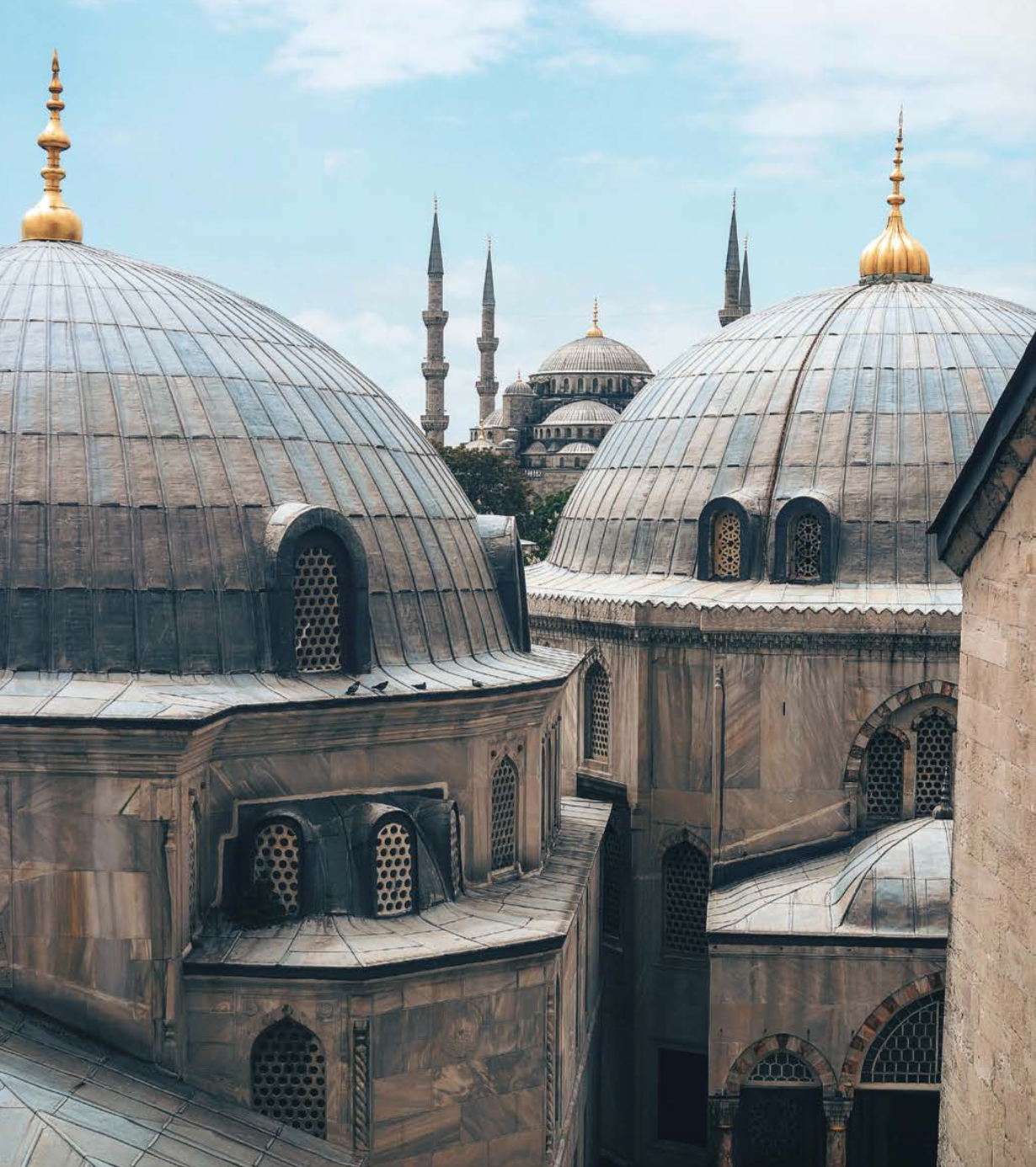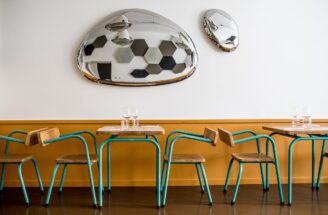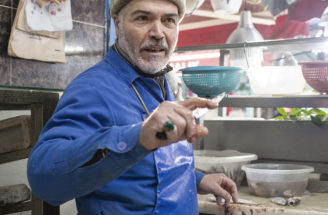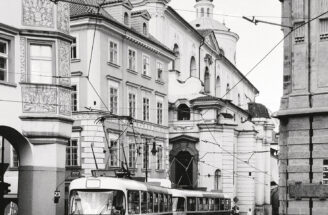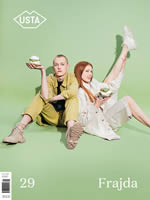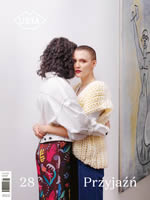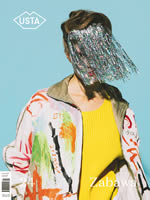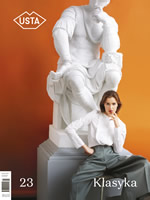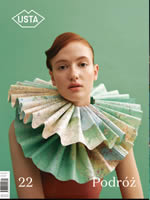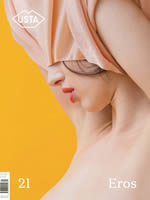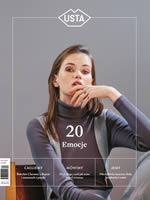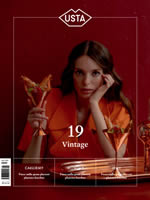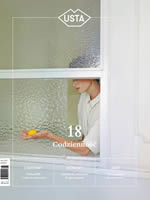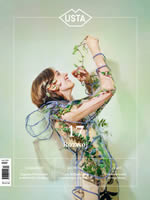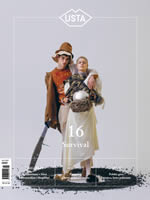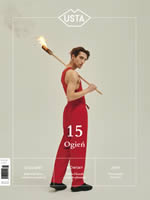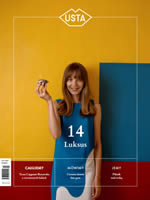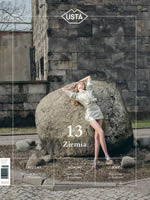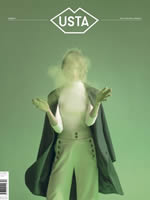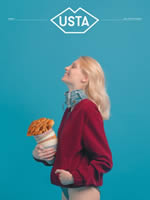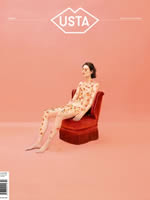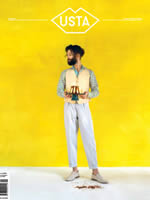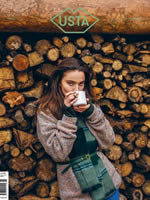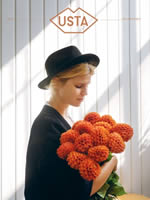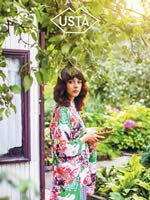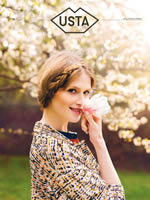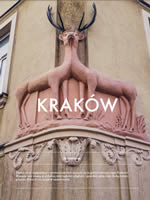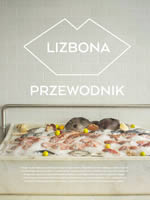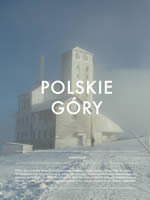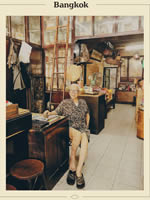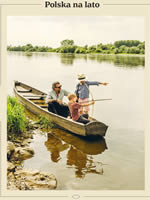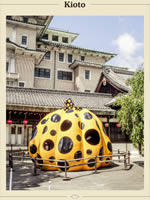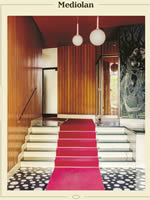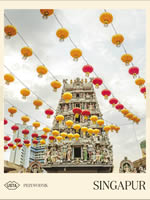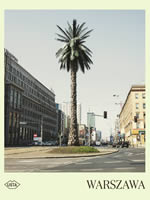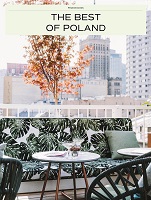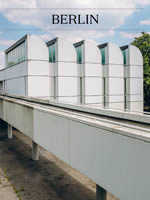Istanbul is said to be a cultural melting pot. The world in miniature. Its unique location has meant that languages, political influences, religions and trends have mixed here like waters in the storm-tossed Bosphorus. There are majestic mosques, quietly snoozing among the city’s buildings, bustling bazaars with pyramids of spices, but also metropolitan avenues lined with boutiques of luxury fashion houses and cafés that New York or Berlin would be proud of. Istanbul is big and chaotic. This is why you need to taste it piece by piece, at your own pace. Take one district at a time: the bustling Kadıköy, the coastal young Karaköy or the elegant Nişantaşı. Choose a café that ‘looks good from the eyes’, buy a bagel from a street stall, stand shoulder to shoulder with the fishermen on the Bosphorus Bridge and gaze into the veiled horizon. Discard the traffic jams, the turmoil, the damp-smothered air from the whole jigsaw and create for yourself the Istanbul of your dreams.
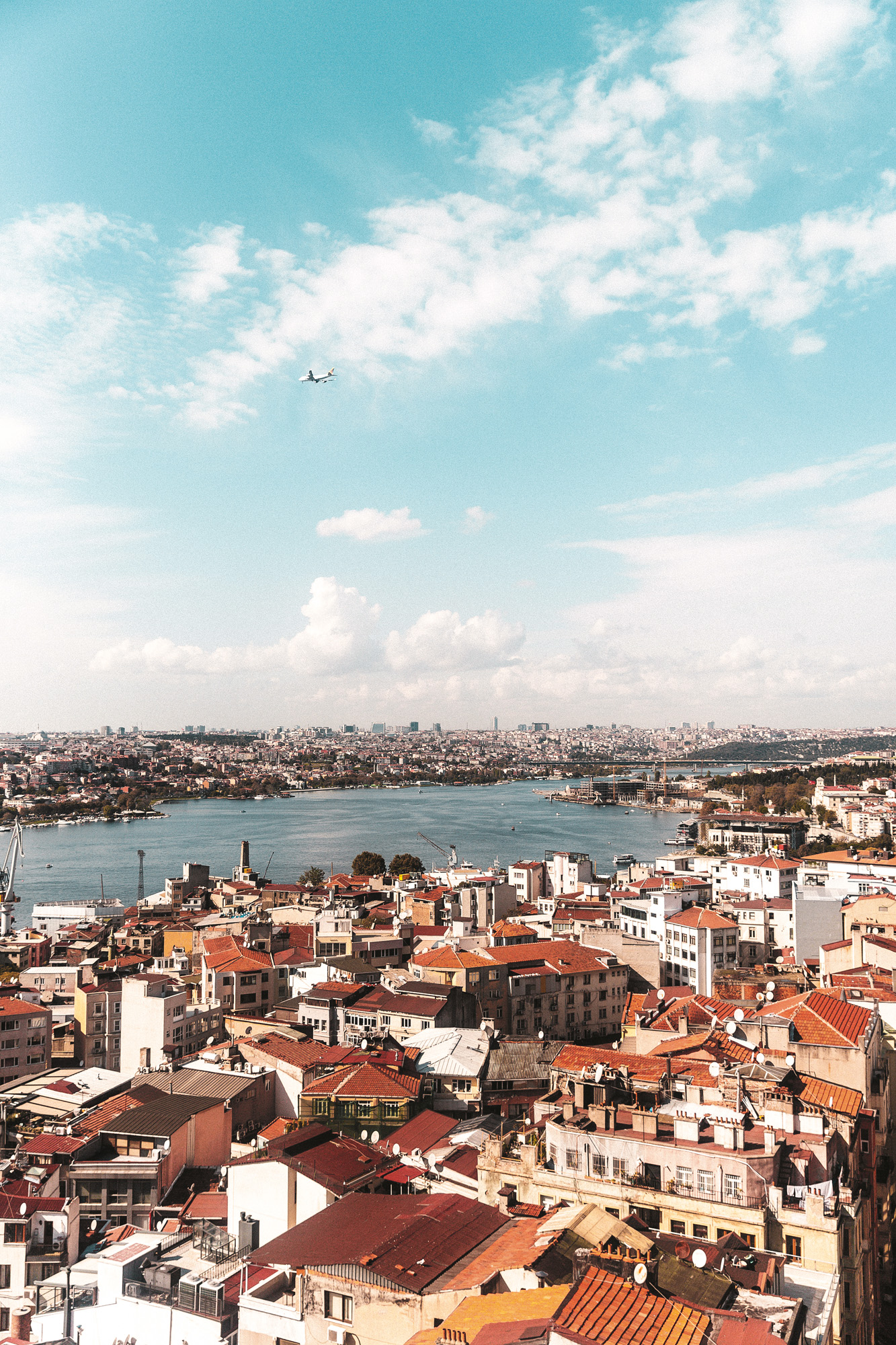
A primer on flavours
A must-visit spot for those who want to explore Anatolian cuisine in more depth. Located on the Asian side of the city, Çiya is the project of Musa Dağdeviren, a chef and above all a tireless researcher of Anatolian culinary culture. Recognising the wealth inherent in its extraordinary diversity, Musa has been collecting regional recipes from different corners of the vast land for years. Methodically written down and prepared with respect for traditional methods, they celebrate the typical ingredients and nuances of flavours of the different regions. Musa is regarded as a walking encyclopaedia of traditional Turkish cuisine (and in fact has several to his credit, including The Turkish Cookbook, published by Phaidon), and Çiya’s menu is a sample of his knowledge. The dishes, although unfamiliar, are well described on the menu, and most are displayed on platters and pots behind a glass counter, so as a last resort you can simply point your finger at the items that look most tempting. Over the years, the original pub has sprouted into several sister establishments in the neighbourhood, but the best place to go is Çiya Sofrası. (MM)
Çiya Sofrası
Güneşli Bahçe Sokak 43
Bauhaus with a pinch of the Orient
A trip to Apartıman means a small excursion outside the city centre, but it is a game worth the candle. The restaurant is located in Yeniköy (the name means “new village” in Turkish), a suburban neighbourhood a few kilometres north of the city centre. If Istanbul is associated by someone with chaos and noise, they will find peace and a counterbalance in Yeniköy. Although the history of this part of the city dates back to the 16th century, its golden period was at the end of the 19th century, when it became particularly fashionable among Istanbul’s socialites. Remnants of these times are the ornate lace-like wooden villas and summer residences, the so-called yalı, often standing on the very banks of the Bosphorus. One of them even housed Agatha Christie in the 1930s when she finished her ‘Murder on the Orient Express’. It is in this district, in a building that in turn is in keeping with the best of Bauhaus patterns, that Apartıman is located. It is an intimate, in-house restaurant helmed by Burçak Kazdal. The bright interior is reminiscent of 1950s Danish design, neatly combining asceticism with the warmth of natural materials – floors of raw longwood polished with hundreds of steps, wooden chairs with barrel backs, eggshell-coloured walls, large windows overlooking the steel lutro of the Bosphorus. The young chef’s food fits in perfectly with the whole anturage. It’s a combination of Turkish ingredients and a neobistro style tinged with a Scandinavian approach to flavours. An excellent starter: taramasalata – a mousse of lightly battered salted roe, bolstered by the honey-sour fruit of Citrus australasica, or fingerlime, the flesh of which resembles tiny golden pearls. Topped with slices of locally baked sourdough bread, a patty of pistachios, chillies and cheese, and a great Turkish oil. Then a green tomato salad with pistachios, creamy goat’s cheese and a dressing made with orange blossom water. And slices of lightly grilled sirloin with pomegranate molasses and sesame. Finally: browned pumpkin cutlets, shaped like miniature Silesian dumplings. Served with yoghurt and roasted aubergine mousse. This cuisine is fresh and light, but also intense in flavour, homely and emotional. (MM)
Apartıman Yeniköy
Köybaşı Caddesi 153
www.instagram.com/apartiman_yenikoy
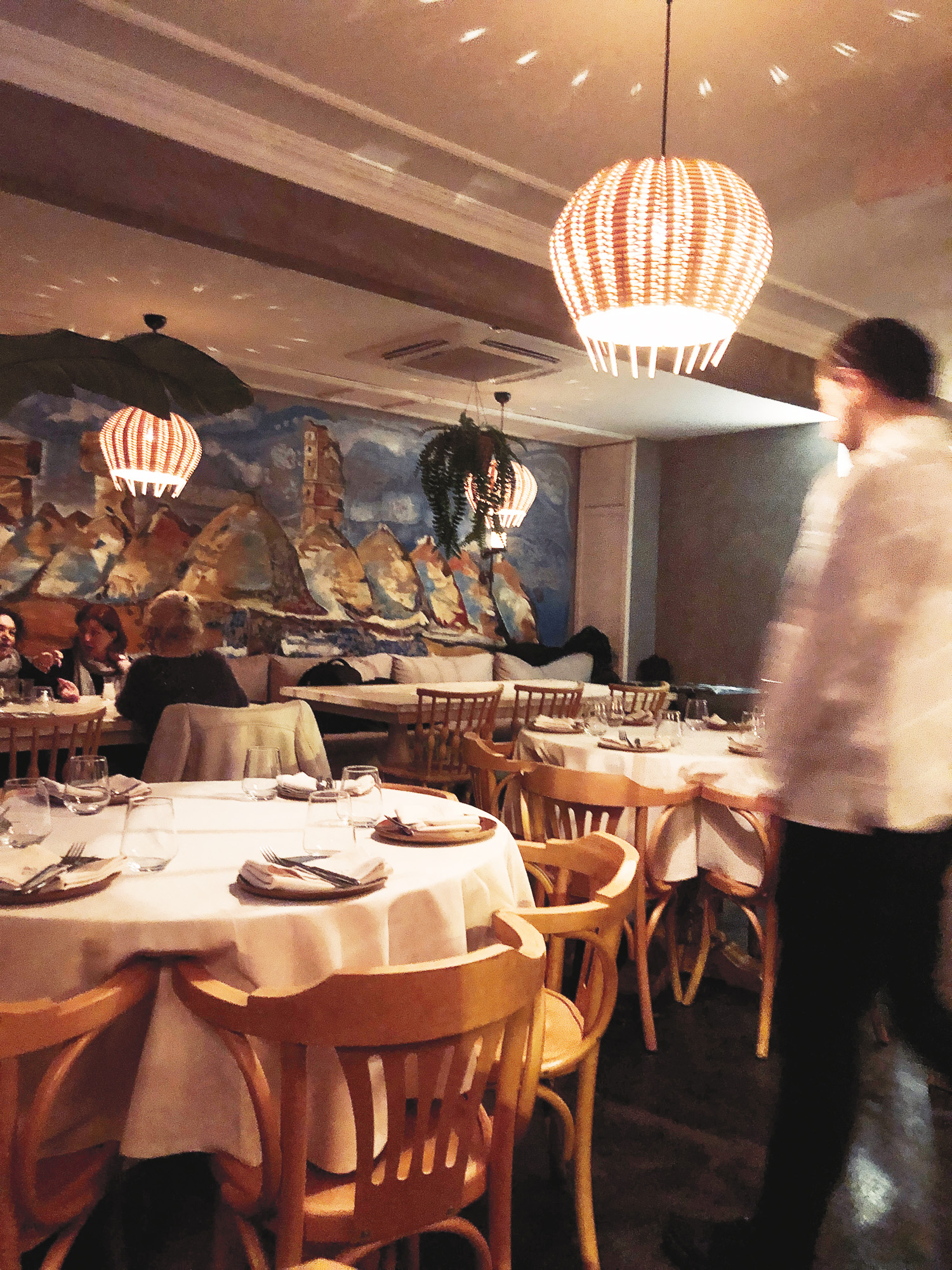
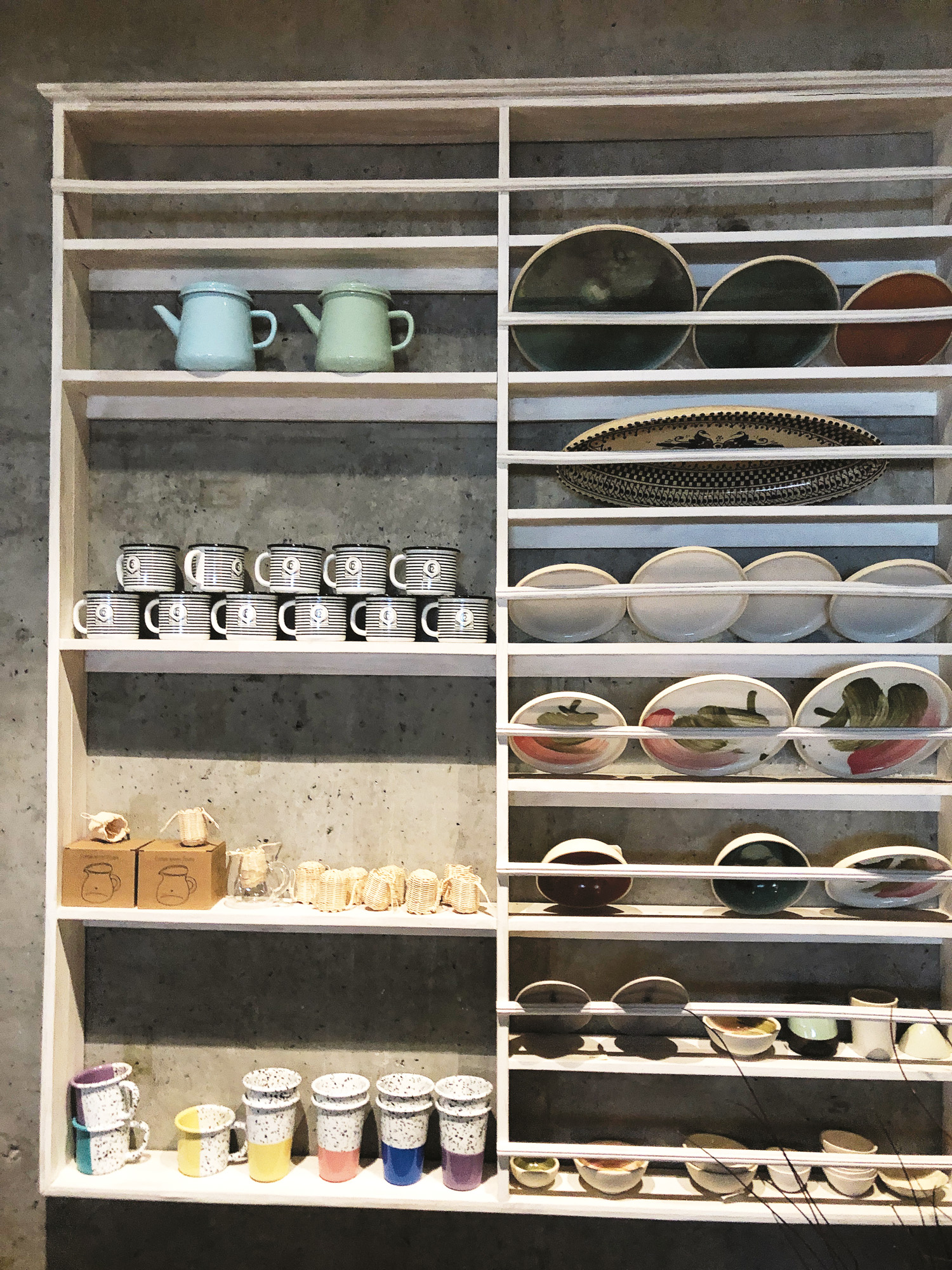
Octopus in the dock
A pub on the list of Istanbul’s ‘must eats’. Unanimously mentioned by everyone as a must-visit point on a culinary rally through Istanbul, it was created by Okutan couple Oral Kurt and Aylın, who were the first to believe that the port-dock district of Karaköy could be a cool spot. Karaköy Lokantası has been in existence since 2007. For many years it was located a few steps away from its present location, at which time it was also connected to the boutique hotel Karaköy Rooms, now sadly closed. For the past few months, the area around the restaurant has been all in disarray – the docks are being rebuilt, it’s supposed to be over in a year’s time and perhaps then the restaurant will return to its previous location. But so far, so nice: spacious interior, small garden, super-efficient service, bustling room always filled with regular guests and tourists twice a day – at lunch and at dinner. It is necessary to book a table in advance, entrance from the street is unlikely. You can start your meal with the classic mezze, which are displayed at the refrigerated counter vis-à-vis the entrance. Here you’ll find hummus with pastrami, topik (Armenian cheese made from fried onions and pine nuts covered with chickpea paste), muhammara (a spicy pepper dip from south-eastern Anatolia and Syria)
and many other appetisers, which also change seasonally. Of the main courses, try the grilled octopus, fried liver, mutton stew. The dinner and lunch menus vary, so both are worth checking out. And in the evening, watch the owner with a curly moustache in a smart suit move from table to table, entertaining guests with conversation and making sure everything runs like clockwork. (MB)
Karaköy Lokantası
Kemankeş Karamustafa Paşa, Kemankeş Caddesi 57
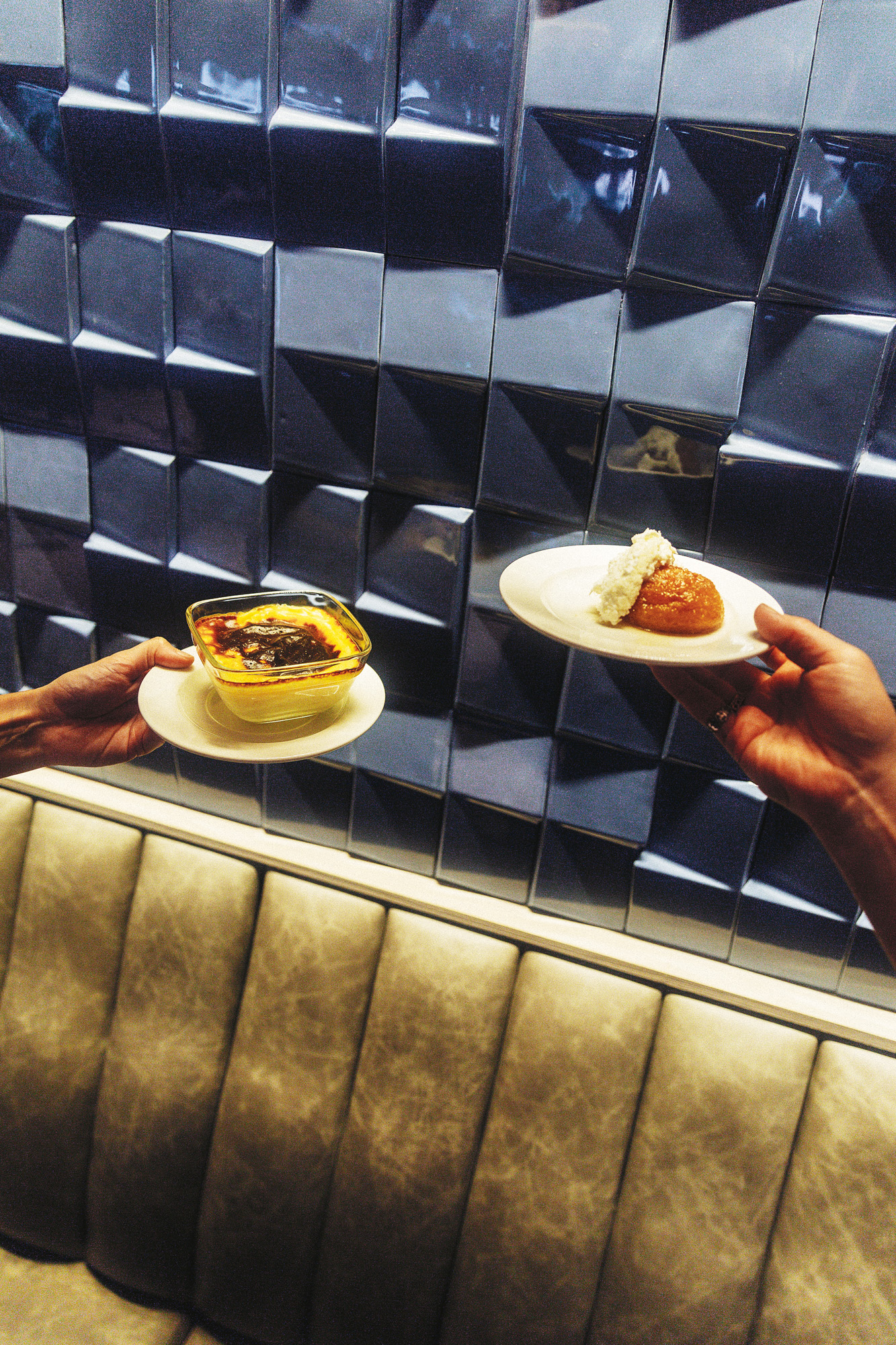
Menemen in an old bank
A newly opened (June 2021) boutique hotel belonging to the Marriott Group’s Autograph Collection chain. The turn-of-the-century building itself was designed by Prussian architect August Jasmund for the Deutsche Orientbank. Neatly integrated into the triangular intersection of Sultan Hamamı
and Fındıkçı Remzi Streets, it catches the eye from afar with its lead grey roof and pink façade. It is pleasantly intimate. Just behind the heavy wooden doors, unchanged for years, the white marble-lined lobby has a small reception area and a bar. Comfortable sofas and a few tables where breakfast is served in the morning and cocktails in the evening. The art déco finishes and very comfortable beds are a definite plus. The bathroom has interesting niche toiletries and herbal teas. Service attentive and location excellent, near the Grand Bazaar, close to the Hagia Sophia temple and the Blue Mosque. Make time for a longer breakfast, as the Turkish version is truly exquisite – including endless plates and delicacies. Menemen, a shakshuka-like dish served here in a lovely metal saucepan, is also quite tasty. After breakfast, venture into the dense network of streets belonging to the Grand Bazaar. And in the evening, visit the observation deck, listen to jazz or smoke a cigar. (MB)
Orientbank Hotel
Fındıkçı Remzi Sokak 7
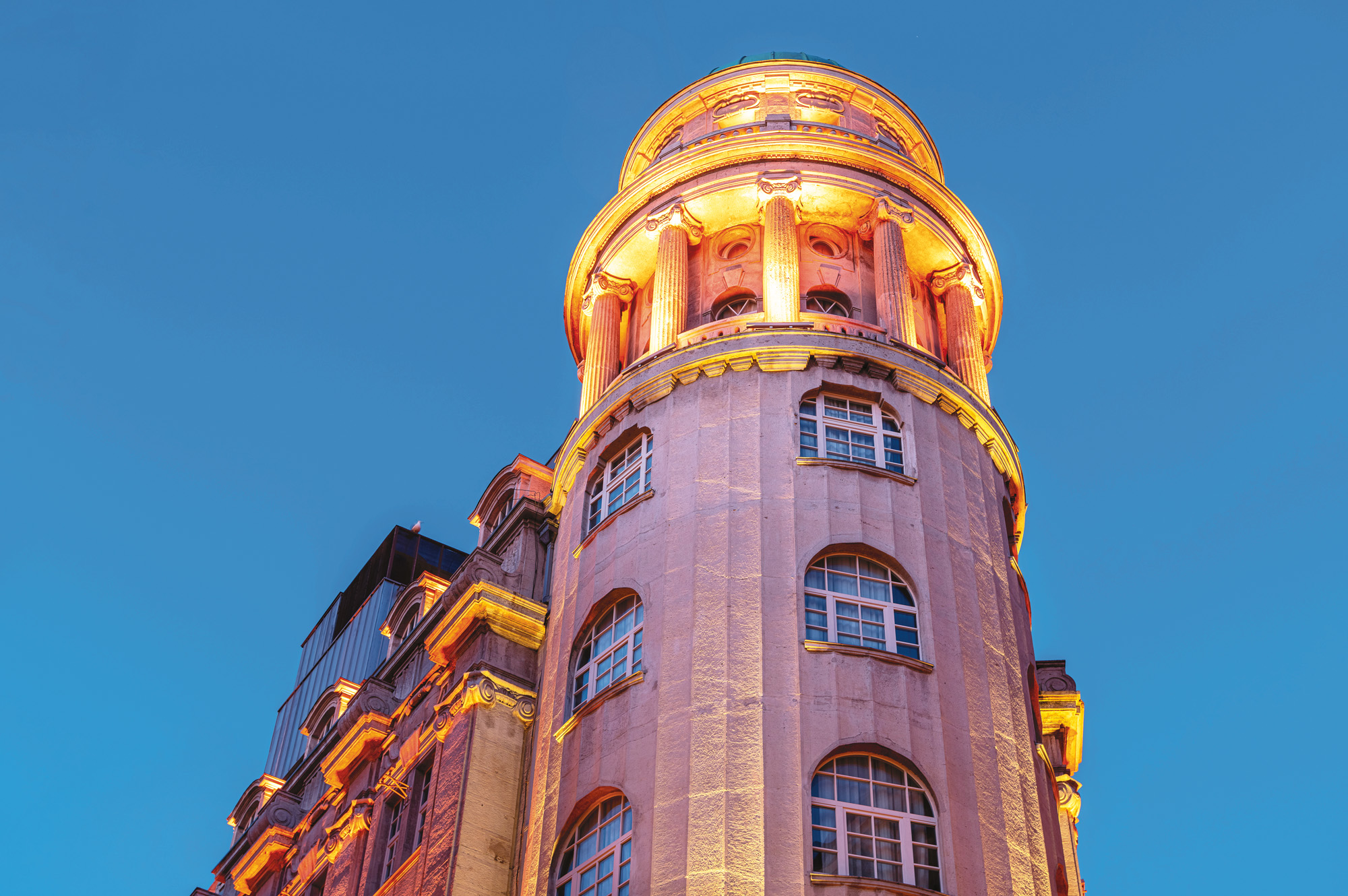
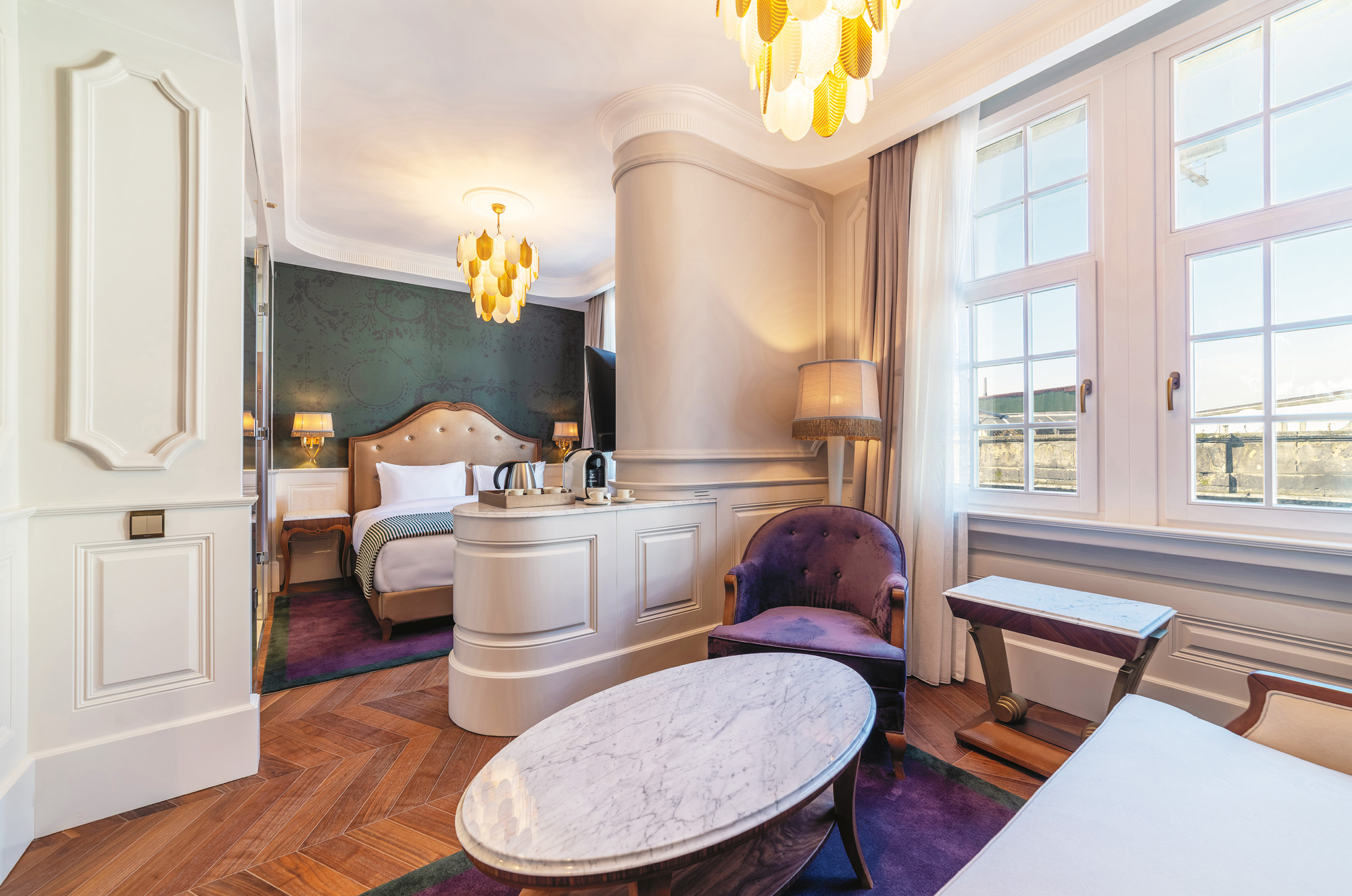
Steam in honour of the pasa
There are quite a few bathhouses in Istanbul, as the tradition of ablutions in special, purpose-built, beautifully designed buildings – has been around for hundreds of years. And the Kılıç Ali Paşa Hamamı is one of the most beautiful hammams in the city. The building, with its piled-up numerous domes and spacious halls lined with white and grey marble inside, lies in Tophane, Istanbul’s harbour area. The construction was commissioned by the famous Pasha Kılıç Ali, and the design of the mosque, the school complex and just the bathhouse was done by the architect Mimar Sinan. The bathhouse was erected between 1578 and 1583 to serve the levendas (soldiers in the Ottoman navy). What to expect inside? A pleasant hour-long ritual of putting yourself in the hands of a person who washes you. Hammams in Istanbul are usually not co-educational – ladies have their own entry hours and are washed by women, men (in their time slots) by men. The attendants rinse us with water and soap us with a special bursting bag that releases large amounts of foam. Then they massage the soaped feet and let them bask on a warm stone for several more minutes. The ablutions end with a drink of herbal tea. A super pleasant and restorative experience. (MB)
Kılıç Ali Paşa Hamamı
Kemankeş Karamustafa Paşa, Hamam Sokak 1
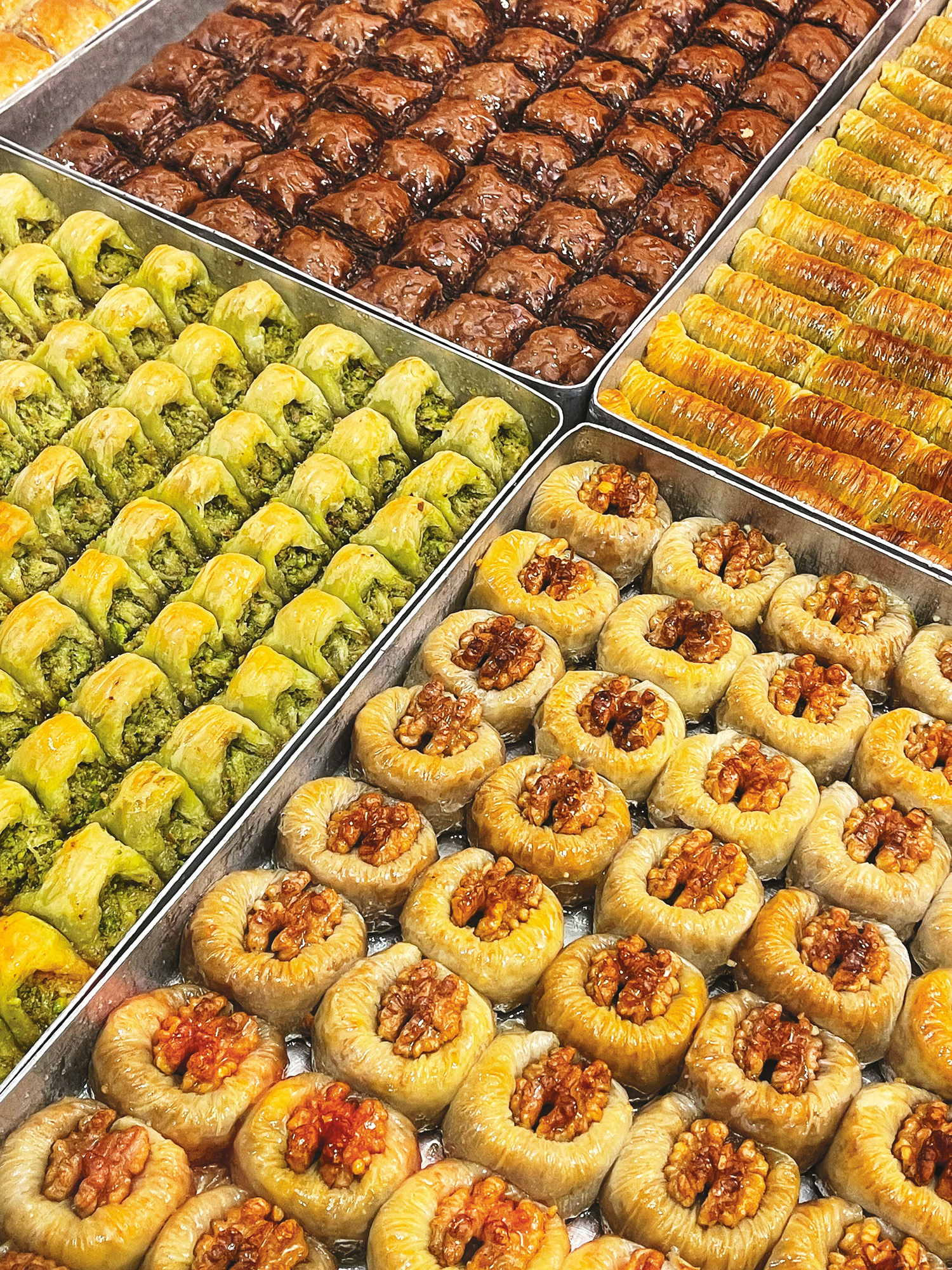

Sultan’s dessert
One does not know the taste of sweets who has not been to Istanbul. For perhaps nowhere else are sweets so sweet, so sticky, rich and beautiful. What’s more, probably in few countries sweets are treated with such seriousness and passion as in Turkey. The patisseries here are like boutiques (often specialising in only one type of delicacy and not infrequently linked immediately to ateliers) and are more like jewellery shops. Perhaps the best-known sweet speciality from the Bosporus is baklava, for which Karaköy Güllüoğlu is worth a trip. It’s a family-run business – the factory and a tiny shop attached to the factory are located on the same street, a few hundred metres from the flagship shop. The basis of baklava is a dough made from flour, water and a little oil, rolled out repeatedly, using a machine and then – in tradition-conscious places like Karaköy Güllüoğlu – by hand until its sheets resemble translucent paper. The yufka dough (which is literally thin) dries out very quickly, which necessitates an impressive pace of work; the sheets are rapidly transferred between workstations, rolled out once more, layered, spread with clarified butter, placed in moulds or on tops, sprinkled with pistachios or walnuts, shaped into rolls, bundles, ravioli or discs. And then drenched in syrup and baked until golden.
“Simple” baklava layered with a nut filling can have 40 layers of pastry, 20 on the bottom and 20 on top! At the Karaköy patisserie, pastries of all types, shapes and flavours are presented in a display case stretching along three walls.They are arranged on large metal trays, keeping the syrup leaking from them in check.A good baklava is supposed to be firmly crunchy on top and soft in the middle, and the sweetness should not dominate the flavour of the nuts.And so it is here.It is impossible to resist the rolls stuffed with chopped pistachios or the baklava with pistachios, cut like a cake (in triangles) and served with a spoonful of fat buffalo milk kaymak, an addictive paste reminiscent of thick cream cheese.(MM)
Karaköy Güllüoğlu
Kemankeş Caddesi, under the underground car park 3-4
www.karakoygulluoglu.com
Texts Monika Brzywczy, Małgosia Minta
photos: Ola Walków, Małgosia Minta and promotional materials
Share this entry on Facebook or copy link